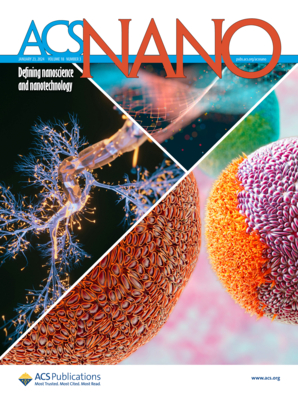Electric Eel-Inspired Bioelectromechanical Bandage with Biochemical-Photothermal-Piezoelectric Synergy for Promoting Postoperative Recovery in Diabetes.
IF 16
1区 材料科学
Q1 CHEMISTRY, MULTIDISCIPLINARY
引用次数: 0
Abstract
Shape-adaptive tissue-responsive adhesive patch (STRAP), inspired by the electric-eel's bioelectric capabilities, is proposed to enhance postsurgical recovery in diabetes. STRAP integrates piezoelectric nanogenerators, photothermal materials, and shape-adaptive fibers to address diabetes-related challenges, including impaired wound healing, infection susceptibility, and regeneration deficits. Its biochemical and photothermal properties promote tissue adhesion through covalent bonding and conformational adaptability, ensuring rapid hemostasis and preventing wound adhesions. STRAP replicates the natural microenvironment for effective regeneration and transforms mechanical energy from acoustic stress into beneficial electrical signals, boosting cellular activity, inhibiting bacterial infection, and accelerating wound repair. Preclinical evaluations across multiple animal models demonstrate STRAP's capacity to dynamically adapt to individual conditions and evolving environments, resulting in superior hemostatic performance in a pig liver injury model, postoperative adhesion prevention in the intestine and stomach, and wound healing acceleration in diabetic mouse, rat, and rabbit models. This underscores the promise of nature-inspired designs in tackling medical challenges. In summary, by integrating rapid hemostasis, infection control, tissue regeneration, and antiadhesion properties, STRAP provides a comprehensive solution for postoperative wound management and recovery.生物化学-光热-压电协同作用的电鳗仿生机电绷带促进糖尿病术后恢复。
受电鳗生物电能力的启发,提出了一种形状自适应组织响应贴片(STRAP),用于增强糖尿病患者的术后恢复。STRAP集成了压电纳米发电机、光热材料和形状自适应纤维,以解决与糖尿病相关的挑战,包括伤口愈合受损、感染易感性和再生缺陷。其生化和光热特性通过共价键和构象适应性促进组织粘连,确保快速止血和防止创面粘连。STRAP复制自然微环境,有效再生,将声应力中的机械能转化为有益的电信号,增强细胞活性,抑制细菌感染,加速伤口修复。多种动物模型的临床前评估表明,STRAP具有动态适应个体条件和不断变化的环境的能力,在猪肝损伤模型中具有优越的止血性能,在肠道和胃中具有术后粘连预防作用,在糖尿病小鼠、大鼠和兔模型中具有加速伤口愈合的作用。这凸显了以自然为灵感的设计在应对医疗挑战方面的前景。总之,通过整合快速止血、感染控制、组织再生和抗粘连特性,STRAP为术后伤口管理和恢复提供了全面的解决方案。
本文章由计算机程序翻译,如有差异,请以英文原文为准。
求助全文
约1分钟内获得全文
求助全文
来源期刊

ACS Nano
工程技术-材料科学:综合
CiteScore
26.00
自引率
4.10%
发文量
1627
审稿时长
1.7 months
期刊介绍:
ACS Nano, published monthly, serves as an international forum for comprehensive articles on nanoscience and nanotechnology research at the intersections of chemistry, biology, materials science, physics, and engineering. The journal fosters communication among scientists in these communities, facilitating collaboration, new research opportunities, and advancements through discoveries. ACS Nano covers synthesis, assembly, characterization, theory, and simulation of nanostructures, nanobiotechnology, nanofabrication, methods and tools for nanoscience and nanotechnology, and self- and directed-assembly. Alongside original research articles, it offers thorough reviews, perspectives on cutting-edge research, and discussions envisioning the future of nanoscience and nanotechnology.
 求助内容:
求助内容: 应助结果提醒方式:
应助结果提醒方式:


